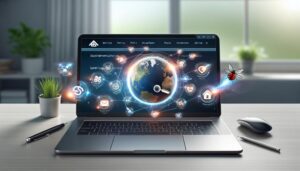Are you tired of seeing your pest control business struggle to generate the return on investment you desire? You’re not alone. In a competitive industry, it’s crucial to find strategies that will set your business apart and drive high ROI.
There are proven methods that can help you achieve this, from understanding your audience to optimizing your online presence. By implementing targeted tactics, you can see a significant increase in your business’s ROI.
But how exactly can you do this? Let’s explore some effective strategies that can take your pest control business to the next level.
Table of Contents
ToggleKey Takeaways
- Understanding the specific needs and concerns of the pest control audience is crucial for driving high ROI.
- Conducting thorough market research and creating detailed customer personas helps in tailoring services to meet the specific needs of the audience.
- Selecting targeted keywords for PPC campaigns using tools like Google Keyword Planner and SEMrush can improve ad relevance and drive higher search volumes.
- Crafting compelling ad copy that highlights the unique selling proposition, addresses specific needs and concerns, and includes a compelling call to action can drive immediate action and improve ROI.
Understanding the Pest Control Audience

To effectively understand the pest control audience, it’s essential to analyze their specific needs and concerns in order to tailor your services to meet their requirements. Conducting thorough market research and creating detailed customer personas are crucial steps in this process.
By understanding the behavioral triggers and customer psychology related to pest control issues, you can better anticipate and address their concerns. Market research helps you identify trends, preferences, and pain points within your target audience. This insight can be used to create customer personas, which are fictional representations of your ideal customers based on real data and market research.
Understanding their behaviors, motivations, and challenges allows you to tailor your services to meet their specific needs. By recognizing the triggers that prompt customers to seek pest control services, you can better position your business to address these concerns effectively. Incorporating customer psychology into your pest control strategy can significantly enhance your ability to connect with and serve your audience.
Selecting Targeted Keywords for PPC
Understanding the behavioral triggers and customer psychology related to pest control issues can guide your selection of targeted keywords for PPC campaigns, ensuring your ads effectively reach your audience.
Conducting thorough keyword research is essential to identify the specific terms and phrases that potential customers are using to search for pest control services. Utilize tools like Google Keyword Planner and SEMrush to discover relevant keywords with high search volumes and low competition.
Incorporating these keywords into your PPC campaigns will increase the chances of your ads being displayed to the right audience at the right time.
In addition to keyword research, prioritizing ad relevance is crucial for the success of your PPC campaigns. Ensure that the keywords you choose align closely with the content and messaging of your ads.
This alignment increases the likelihood of your ads being clicked on by users who are actively seeking pest control solutions. By focusing on ad relevance, you can improve your ad quality scores, lower your cost per click, and ultimately drive higher conversion rates.
Crafting Compelling Ad Copy

Crafting compelling ad copy requires understanding the needs and motivations of your target audience in order to effectively communicate the value of your pest control services.
To create ad copy that resonates with your audience and drives results, consider the following writing tips and copywriting techniques:
- Know Your Audience: Research and understand the demographics, pain points, and preferences of your target customers. Tailor your ad copy to address their specific needs and concerns.
- Highlight Unique Selling Proposition: Clearly articulate what sets your pest control services apart from the competition. Whether it’s eco-friendly solutions, guaranteed results, or exceptional customer service, emphasize the unique value you offer.
- Create a Compelling Call to Action: Encourage immediate action by incorporating a strong and clear call to action in your ad copy. Whether it’s scheduling a service, claiming a special offer, or contacting your team, guide your audience on the next steps to take.
Optimizing Landing Pages for Conversions
Understanding your audience’s needs and motivations is crucial for crafting compelling ad copy, and this knowledge also plays a vital role in optimizing landing pages for conversions in your pest control business. When it comes to optimizing your landing pages, A/B testing is a valuable tool. By creating two versions of a landing page and testing them against each other, you can gather data on which design and content elements are most effective in driving conversions. This iterative approach allows you to make data-driven decisions on how to optimize your landing pages for maximum impact.
In addition to A/B testing, mobile optimization is essential for improving your landing page conversions. With more people accessing the internet through mobile devices, it’s crucial that your landing pages are fully optimized for mobile viewing. This includes ensuring fast load times, easy navigation, and a responsive design that adapts to various screen sizes. By prioritizing mobile optimization, you can provide a seamless and engaging experience for mobile users, ultimately driving higher conversions for your pest control business.
Implementing Conversion Tracking and Analysis
To improve the performance of your pest control business, implementing conversion tracking and analysis is essential for understanding the effectiveness of your marketing efforts and making data-driven decisions. By tracking and analyzing conversion data, you can gain valuable insights into customer behavior and identify areas for improvement in your marketing strategies.
- Performance Metrics: Implementing conversion tracking allows you to measure important performance metrics such as conversion rate, cost per acquisition, and return on investment. This data provides a clear picture of how your marketing campaigns are performing and where adjustments may be needed.
- Customer Behavior: Conversion tracking and analysis enable you to understand customer behavior throughout the entire conversion process. You can identify the touchpoints that lead to conversions and those that may be causing friction, allowing you to optimize the customer journey for better results.
- Data-Driven Decisions: By leveraging conversion data, you can make informed, data-driven decisions to allocate your marketing budget effectively. This ensures that you’re investing in strategies that yield the highest returns and continuously improving your overall marketing performance.





